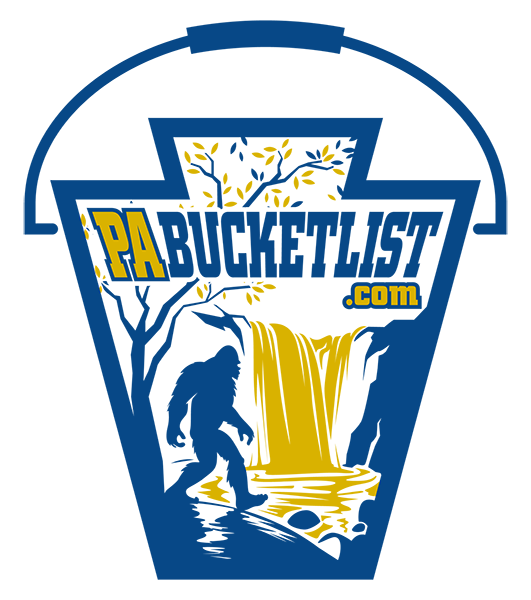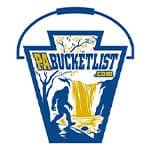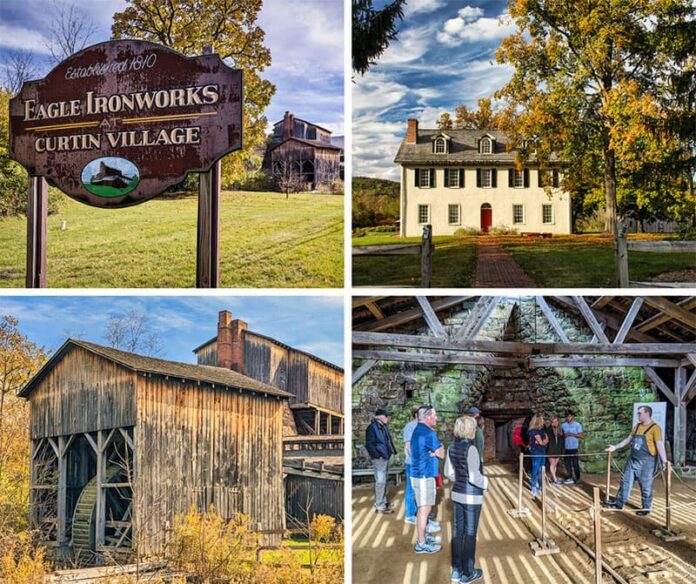
If you’re looking for information about Curtin Village and Eagle Ironworks in Centre County, you’re in the right place!

Curtin Village is a beautifully-preserved and restored 19th century iron plantation, composed of the iron master’s mansion, the iron furnace, and the workers village.
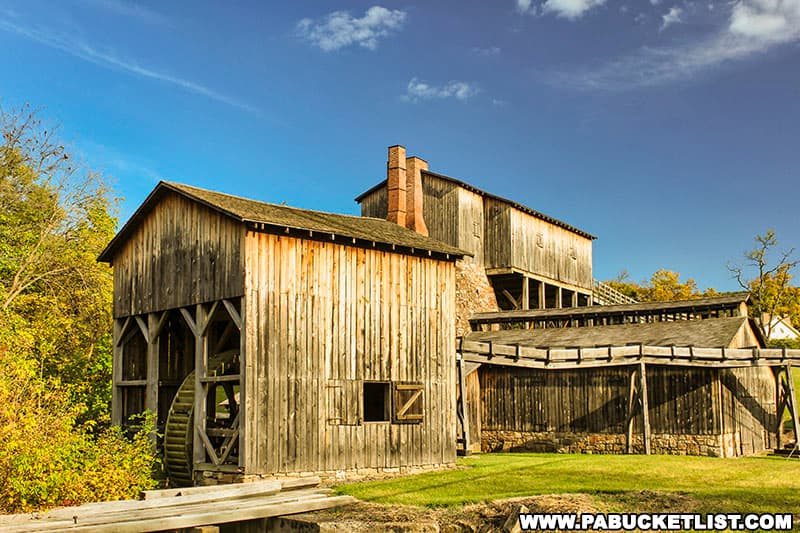
The grounds at Curtin Village are open for self-guided tours year-round.
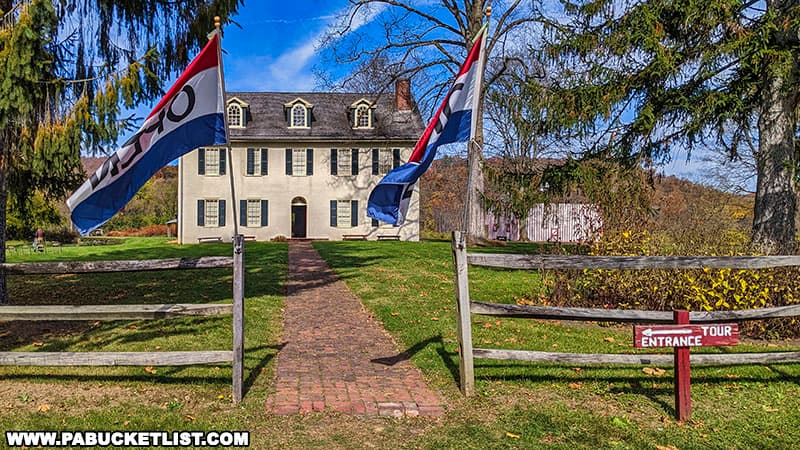
On the 2nd and 4th Sundays of each month from June through September , you can tour the insides of both the mansion and the iron works with docents who provide a wealth of information about the iron-making process, the Curtin family, and life in this company town in the 1800s.
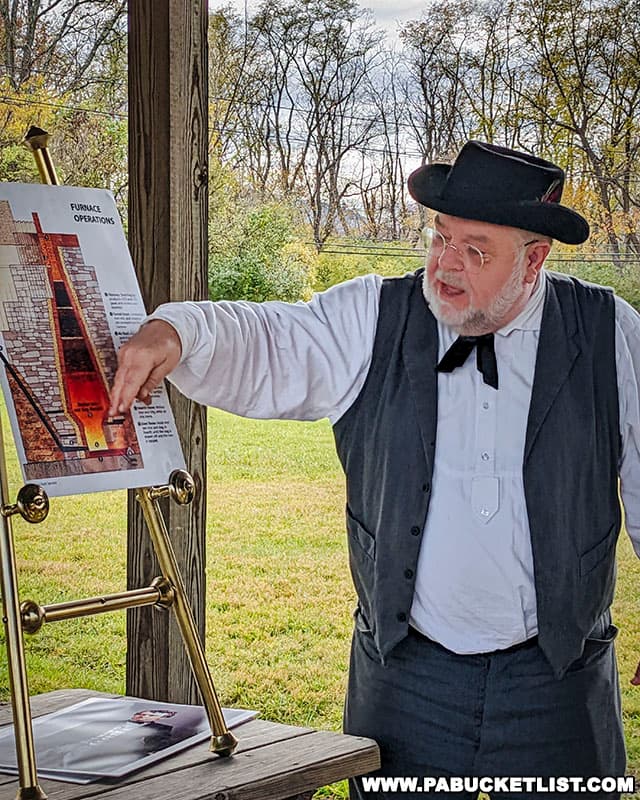
Iron Making in Centre County
Centre County was home to all the raw materials necessary to produce iron in the 19th century – iron ore, limestone, and wood to produce charcoal.
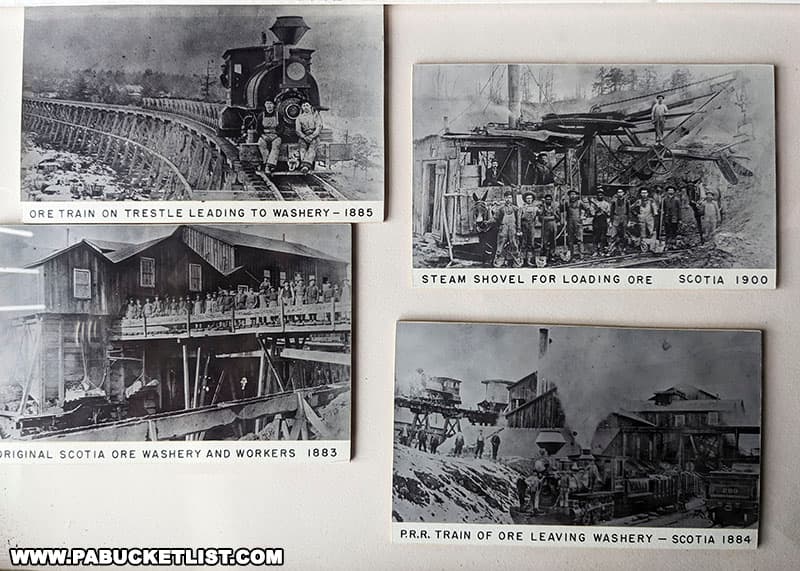
As a result, many iron furnaces were built in Centre County during that time period, but all that remains of most of them is the stone portion of the blast furnace.
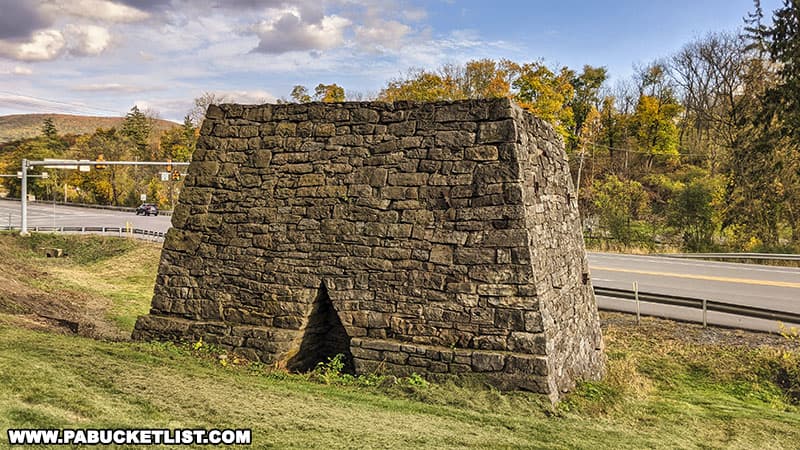
What makes Eagle Ironworks at Curtin Village special is that you can see the vast array of wooden structures that existed around those stone stacks when the furnace was in operation, allowing you to gain a better understanding of how iron was actually produced.
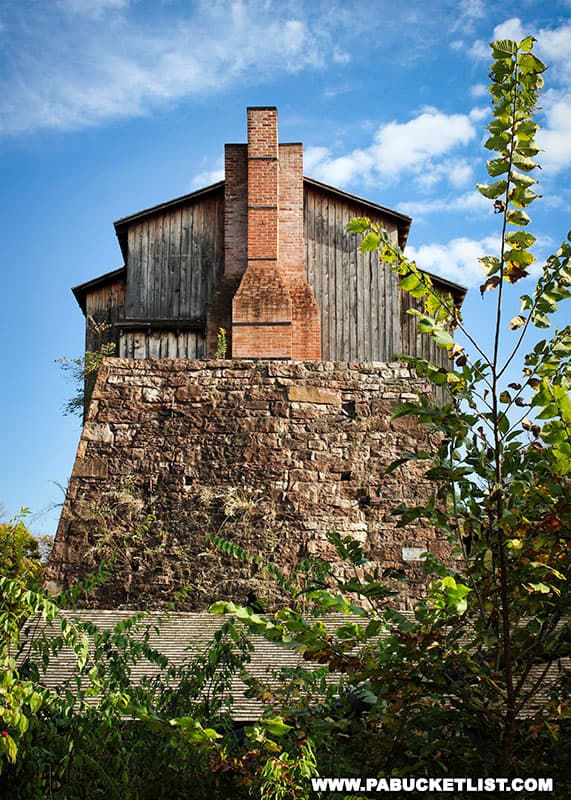
Exploring Eagle Ironworks
Roland Curtin was an Irish immigrant who set out to make his fortune in America in the iron business.
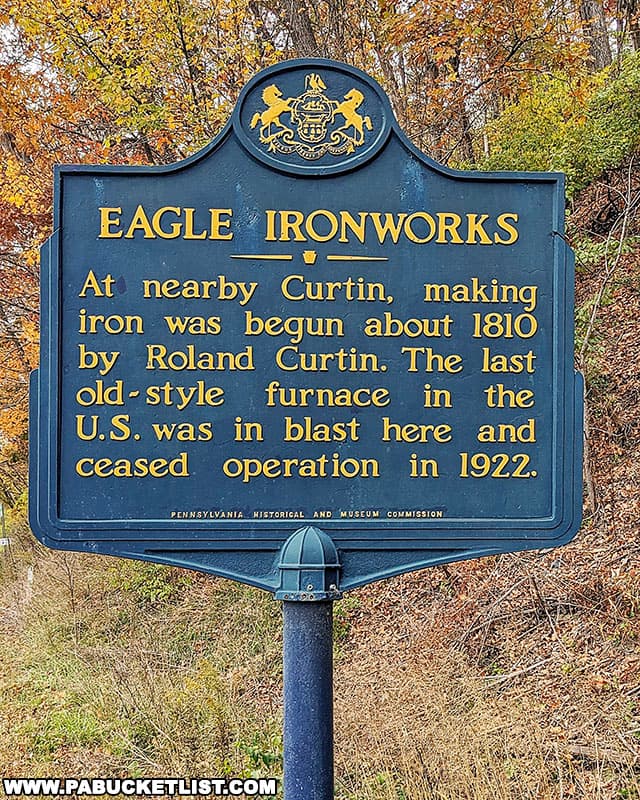
Between 1810 and 1922, Roland and his descendants made iron here using the “charcoal blast furnace” method.
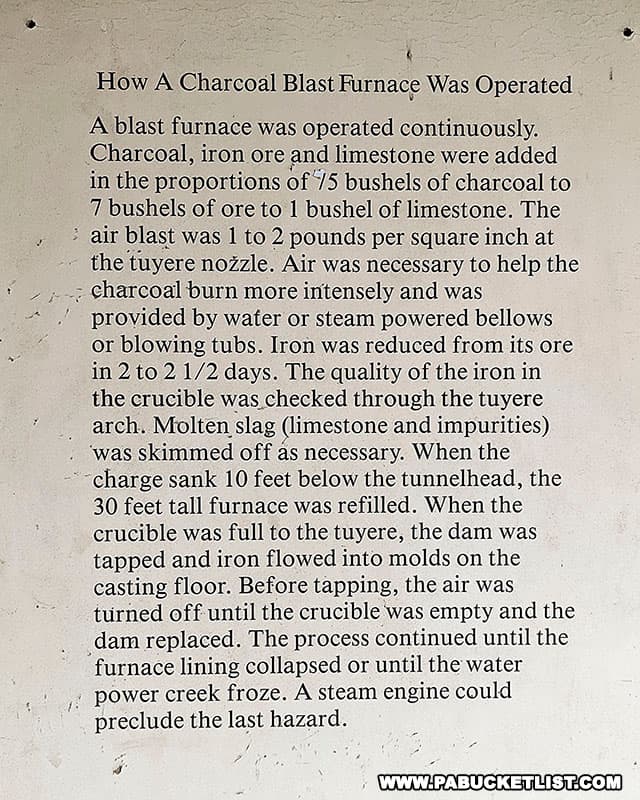
The raw ingredients (iron ore, limestone, and charcoal) would be transported up a ramp to the charging house which sat above the furnace.
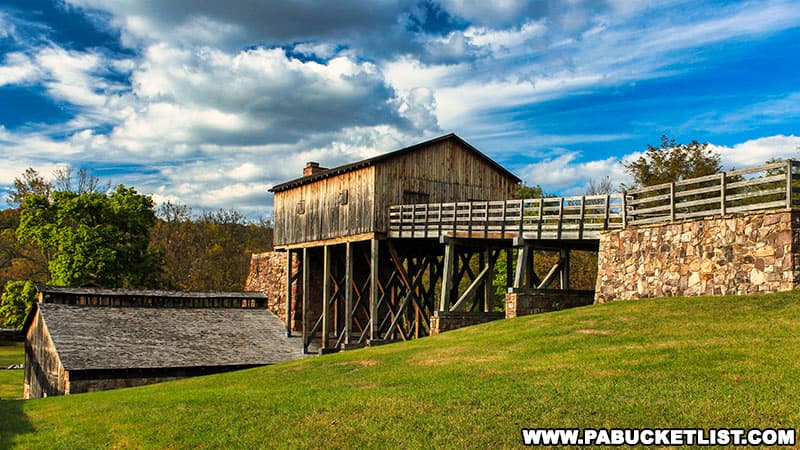
Workers would then shovel the raw ingredients into the top of the furnace in the correct ratios.
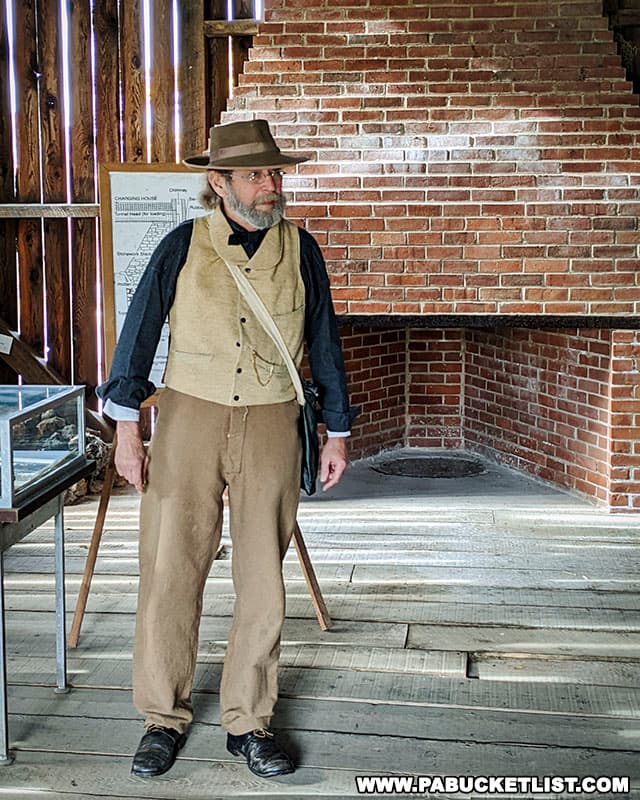
Bellows attached to a waterwheel would “blast” cold air into the furnace, creating a fire hot enough to melt the ion ore.

When enough molten iron was contained inside the “crucible” of the blast furnace, the furnace would be “tapped” at the bottom, and the molten iron would flow out into “casts” on the casting house floor (thus the term, “cast iron”).
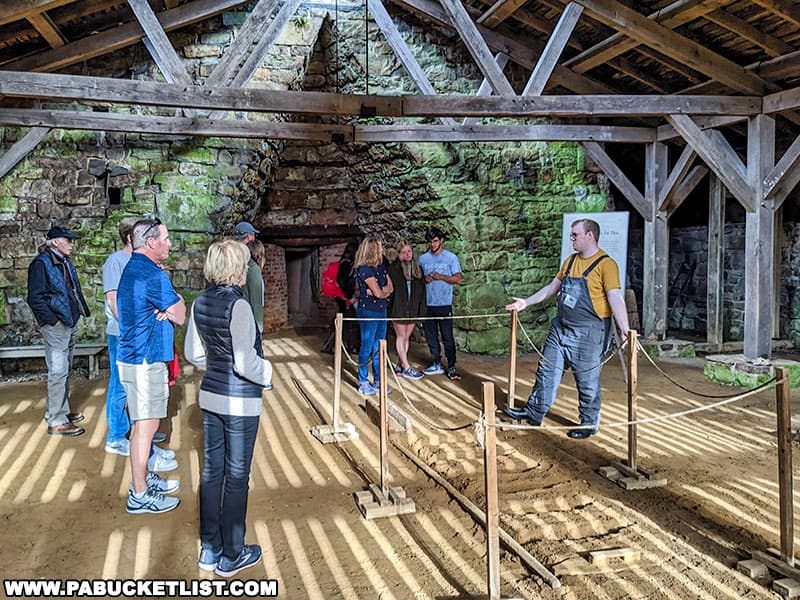
This cast iron was sometimes called “pig iron”, because the rows of iron casts looked like piglets lined up to suckle.
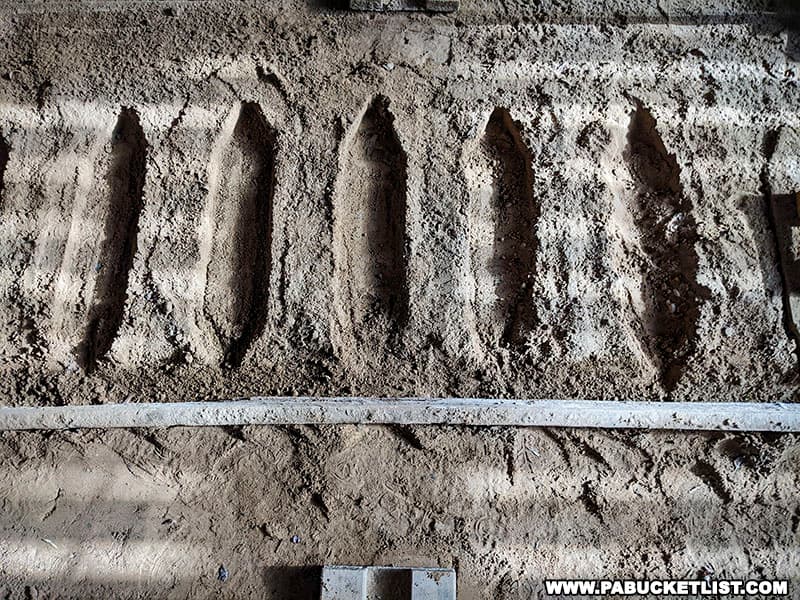
Outside the casting house you’ll find what was likely the last piece of cast iron produced at Curtin Village, salvaged from the bottom of the furnace during restoration.
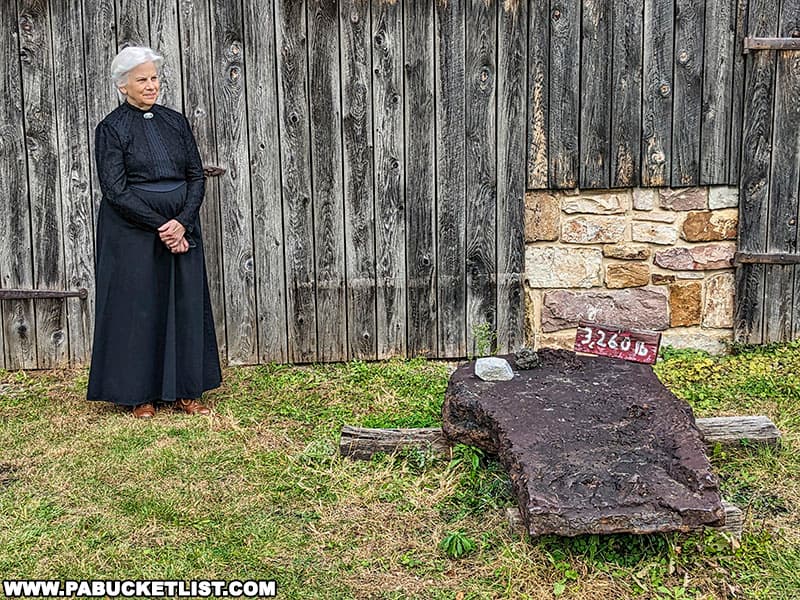
At it’s peak, the ironworks at Curtin Village produced approximately 600 tons of cast iron per year.
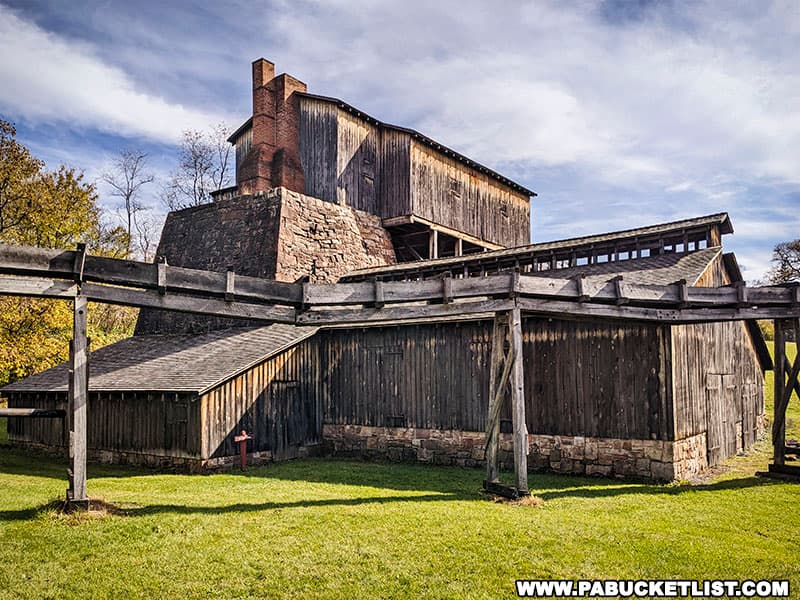
Exploring the Curtin Mansion
The Curtin Mansion was built between 1830 and 1831 by Ironmaster Roland Curtin .
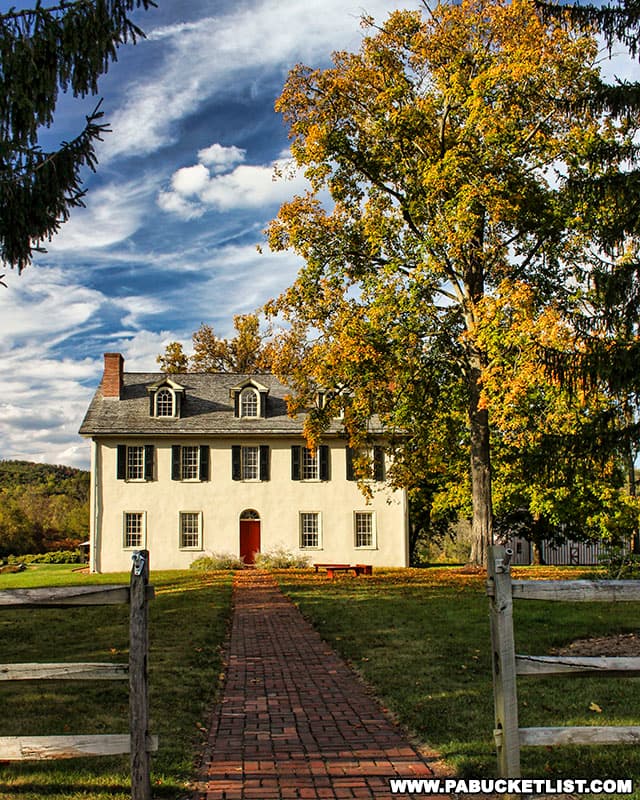
The home is an example of Federalist-style architecture, and retains its original woodwork, staircases, and floors.
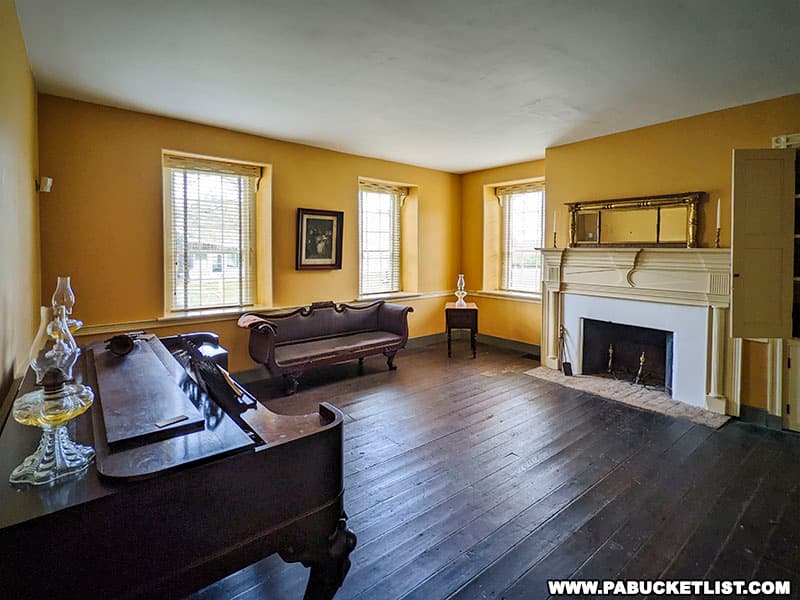
There are 15 rooms, decorated with original and donated pieces of period-correct furniture.
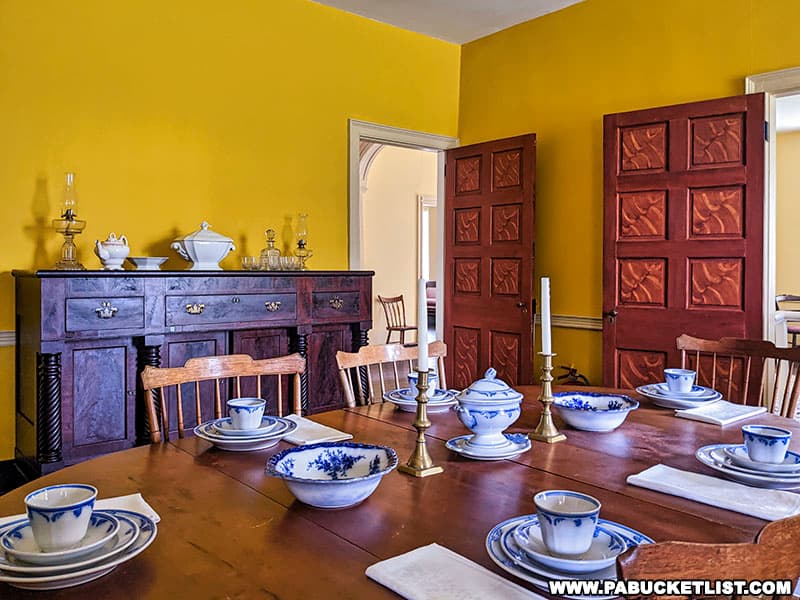
There are ten operable fireplaces in the mansion.
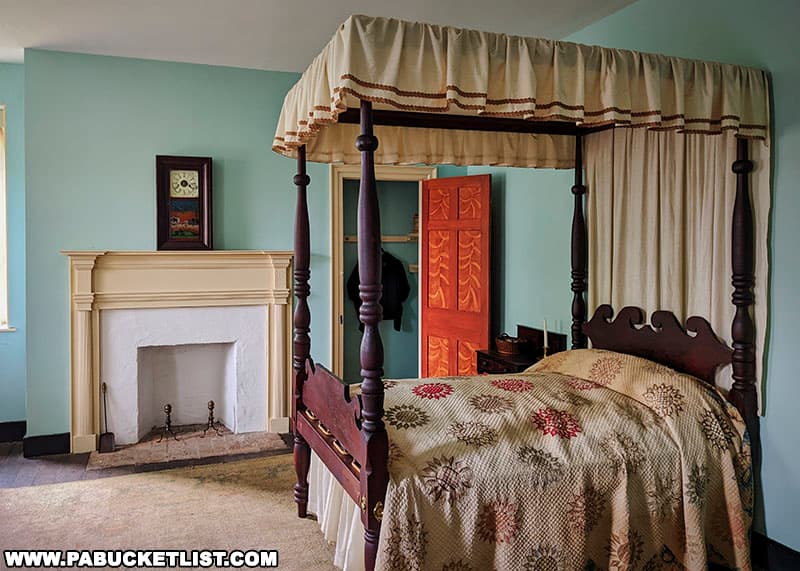
The mansion was occupied continuously by the Curtin family from 1830 until the early 1950’s.
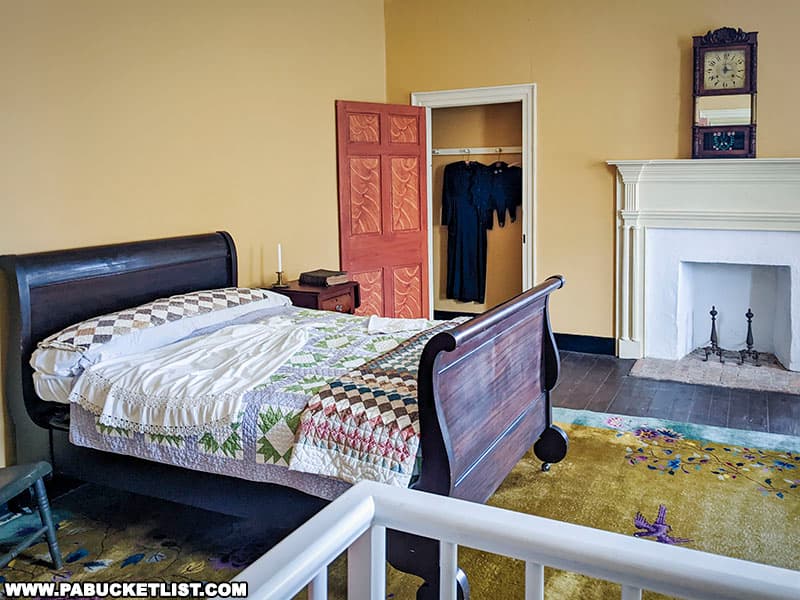
If you take the guided tour, your docent will highlight both the architectural features of the mansion and daily life in the home.
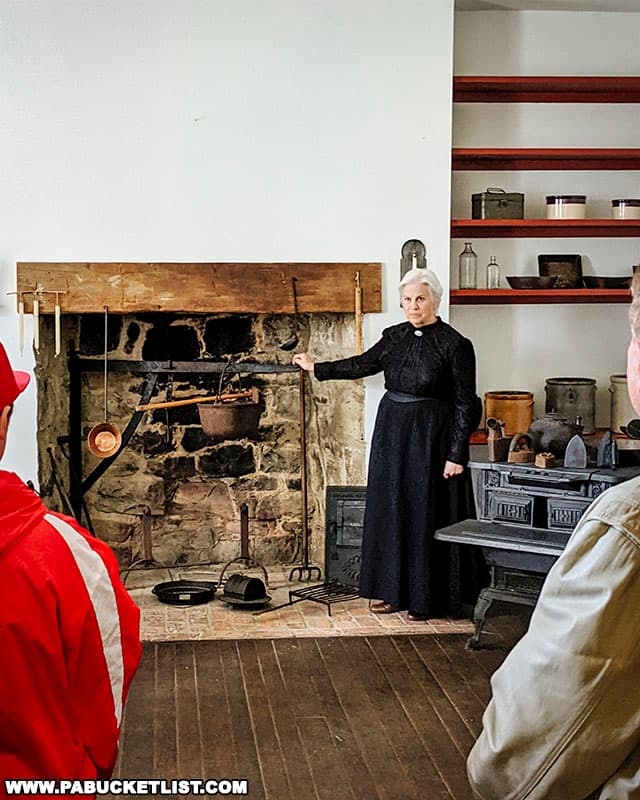
The Workers Village
To attract and keep workers, the Curtins offered them free housing in the workers’ village.
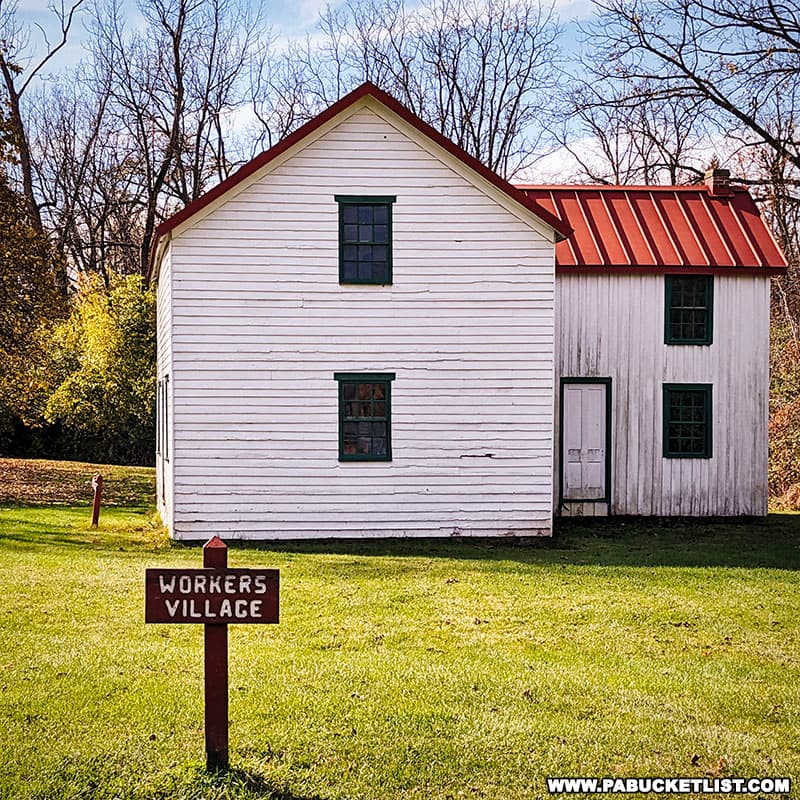
Miners, charcoal makers, furnace workers, blacksmiths, carpenters, masons – these were just some of the craftsmen necessary to operate this iron plantation.
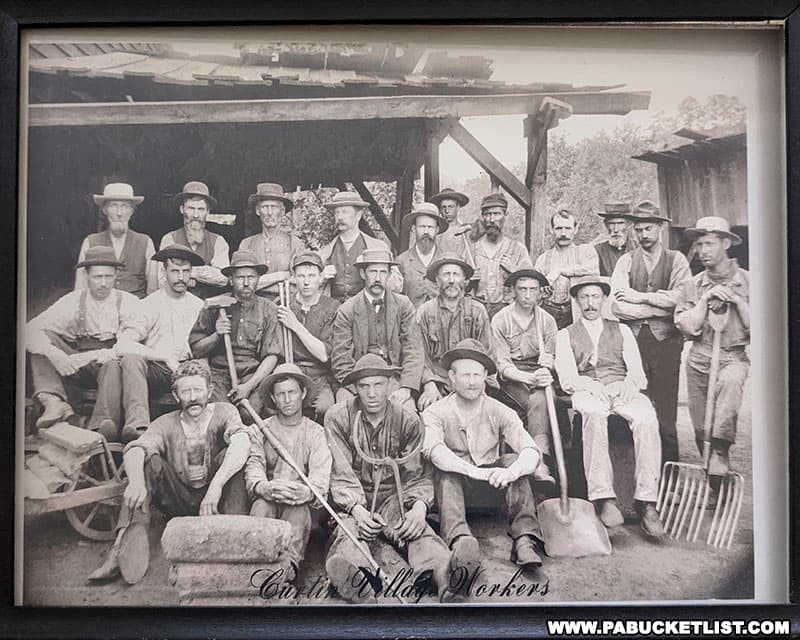
There was a pecking order to the housing arrangements, with more tenured workers getting the nicer houses.
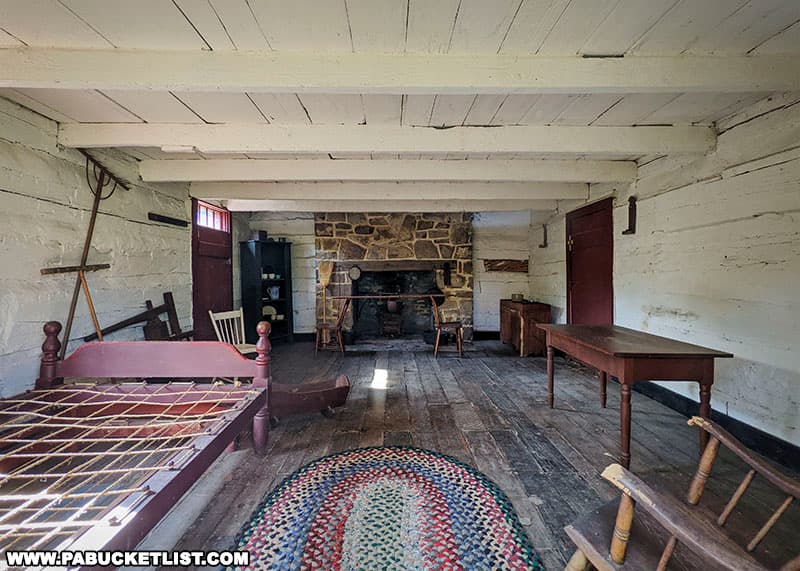
In its heyday, the village contained over a dozen structures arranged around a communal “village green”.
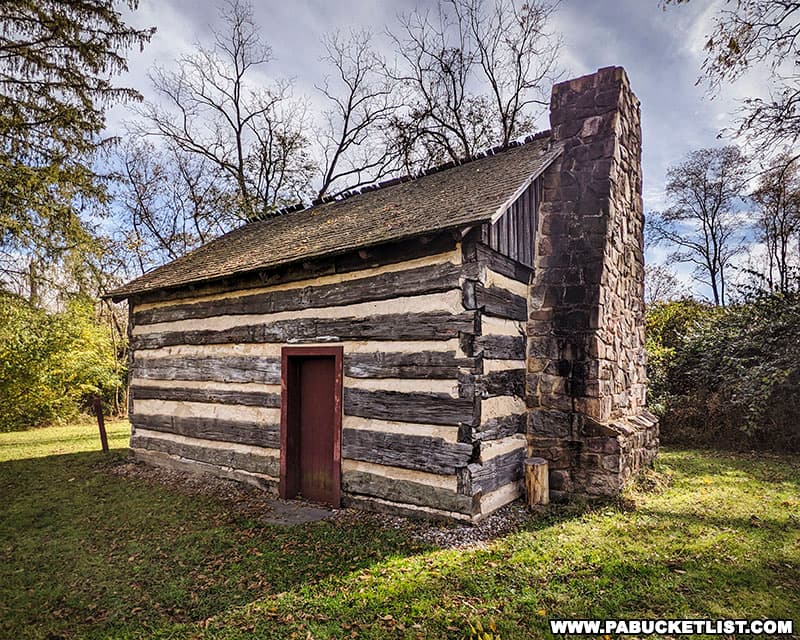
Hours and Tour Information
In 2023, guided tours will occur on the 2nd and 4th Sundays of each month from June through September – these tours are your chance to go inside the mansion and ironworks.
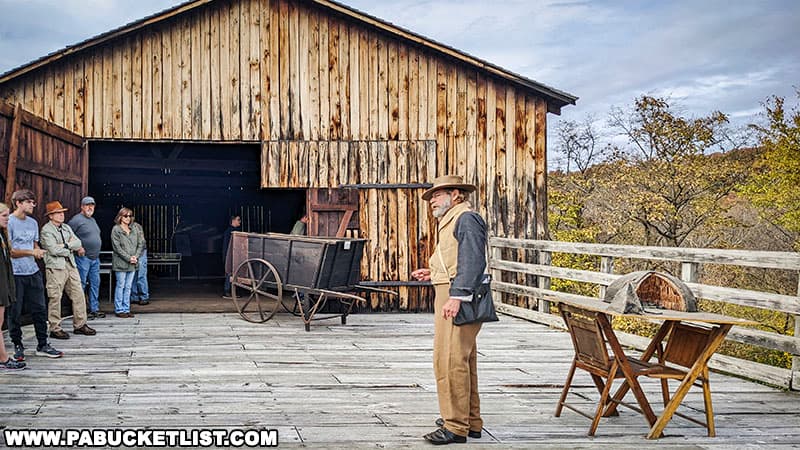
The tours begin at 2:00 PM and last 75-90 minutes; there are no fees for the guided tour but donations are gratefully accepted.
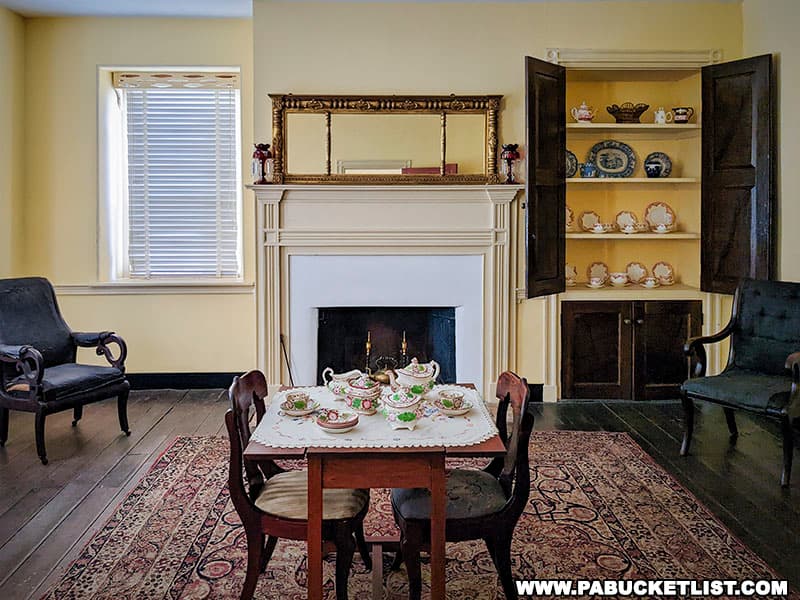
If you want to explore the grounds on your own, you can do this any day year-round, but please note – the mansion and ironworks can only be viewed from the outside on self-guided tours.
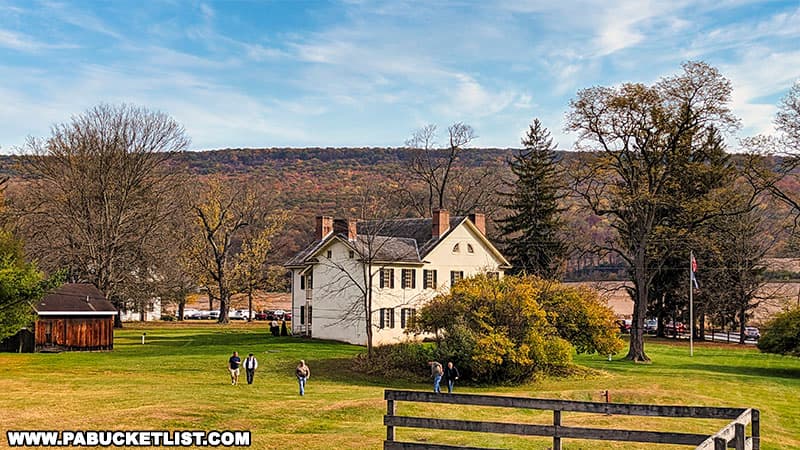
For more information about hours and tours, check out Curtin Village’s OFFICIAL WEBSITE.
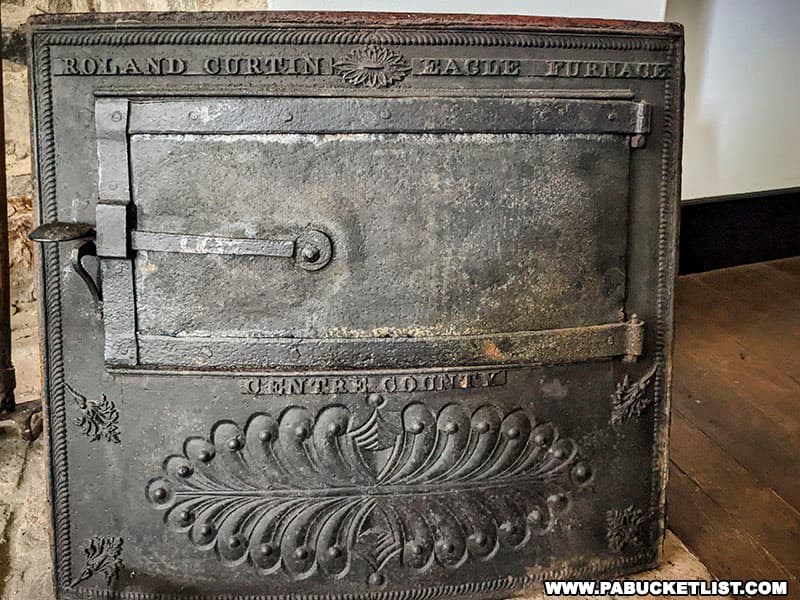
Directions to Curtin Village
Curtin Village is located approximately 3 miles north of Exit 158 off I-80, just south of Bald Eagle State Park.
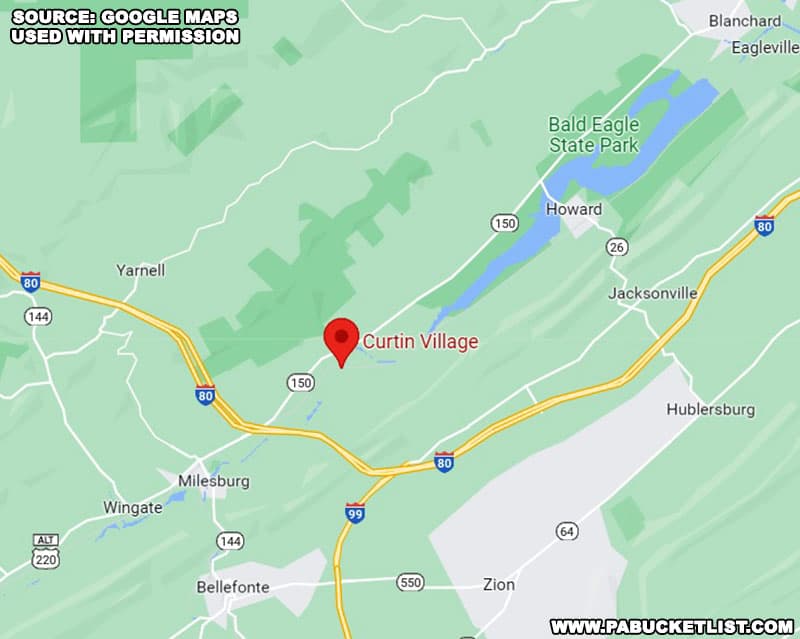
If navigating to Curtin Village by GPS, use 251 Curtin Village Road, Howard, PA 16841 as the street address.
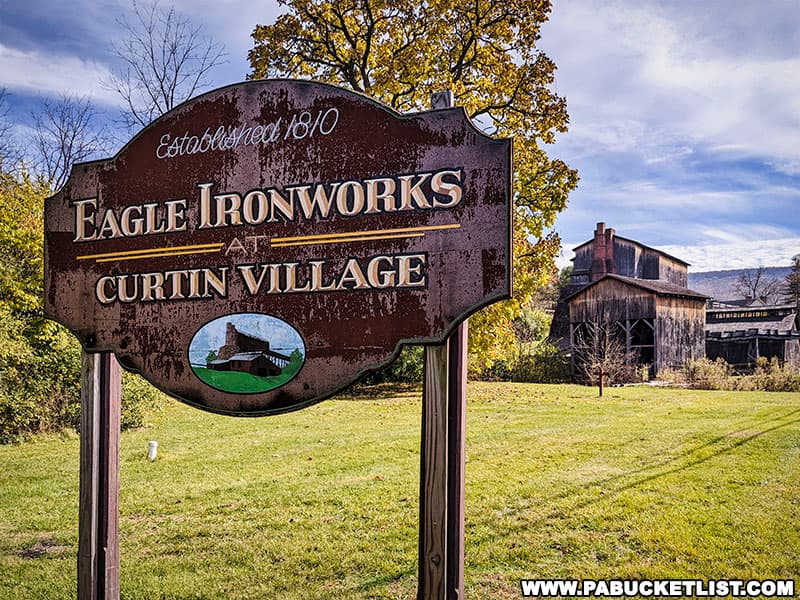
Related Attractions
Centre Furnace Mansion in State College served as the home for a series of iron masters in the late 1700s through the mid 1800s.
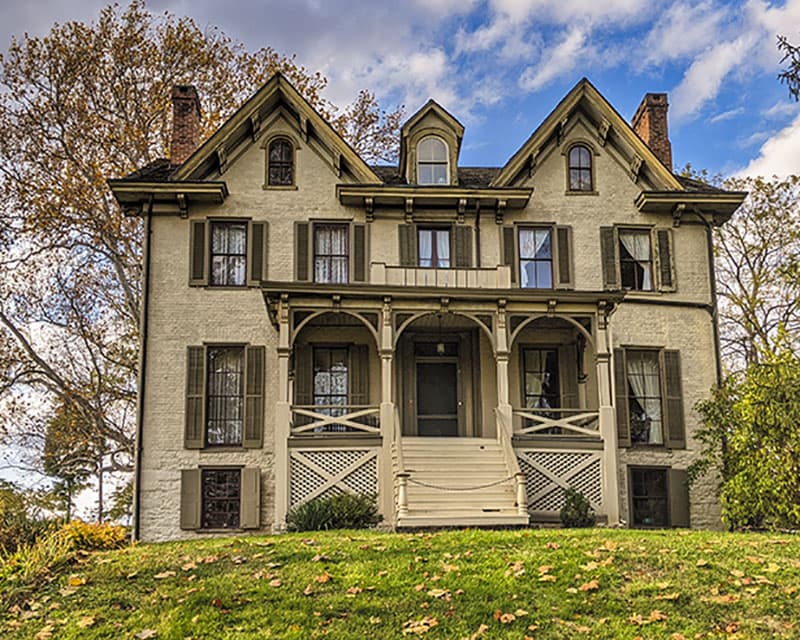
It is also the birthplace of Farmers High School in 1855, a school that would grow into what is known today as Penn State University.
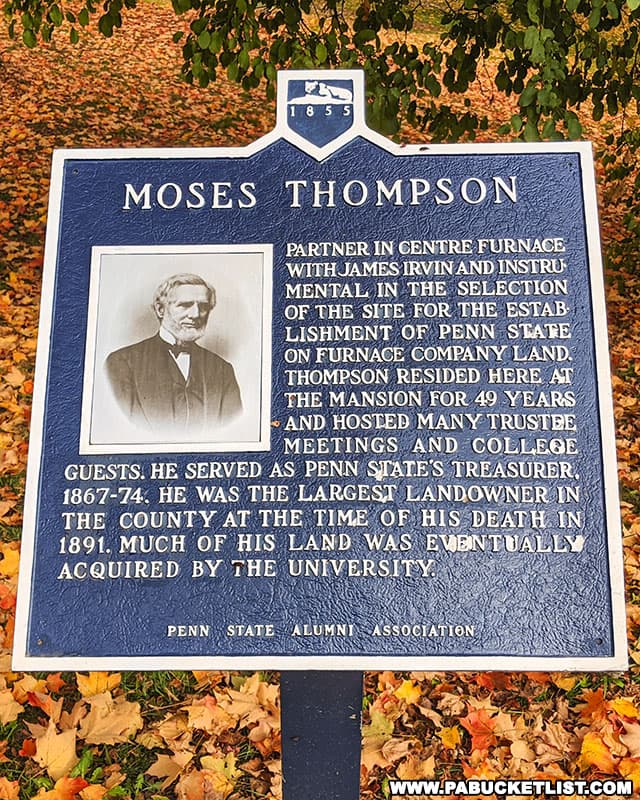
Exploring the Ghost Town of Scotia Near State College introduces you to the story of the Scotia iron mines and the company town built to house those miners.
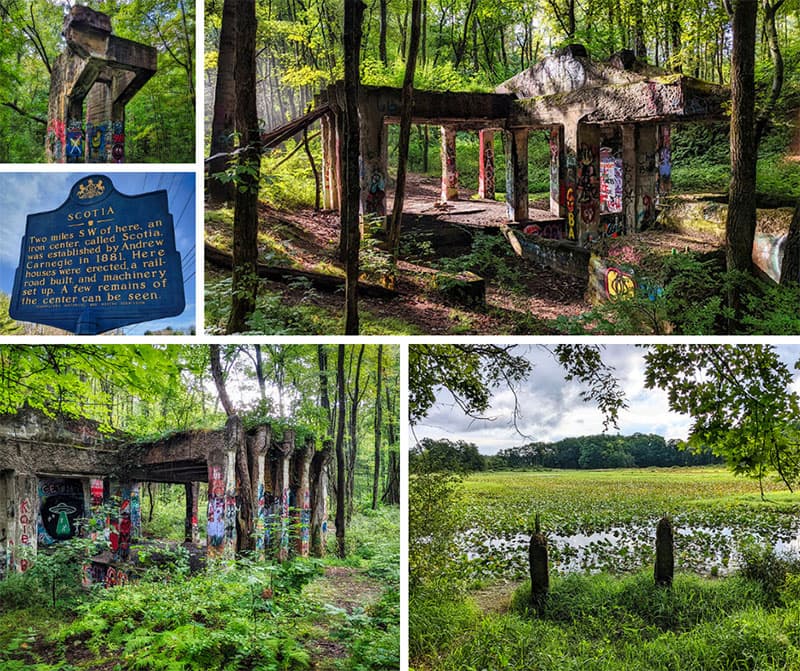
Bald Eagle State Park is a 5,900 acre recreational area in Centre County, just a few minutes north of Curtin Village.
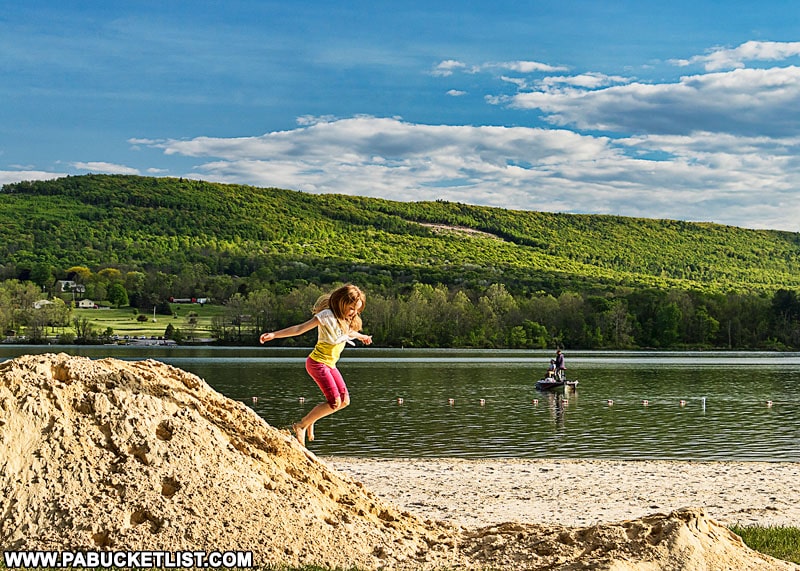
At the heart of Bald Eagle State Park is 1,730-acre Sayers Lake, built by the the U.S. Army Corps of Engineers in 1969 as part of a flood control project.

Exploring Victorian Bellefonte in Centre County introduces you to the the “Victorian Jewel” of Pennsylvania!
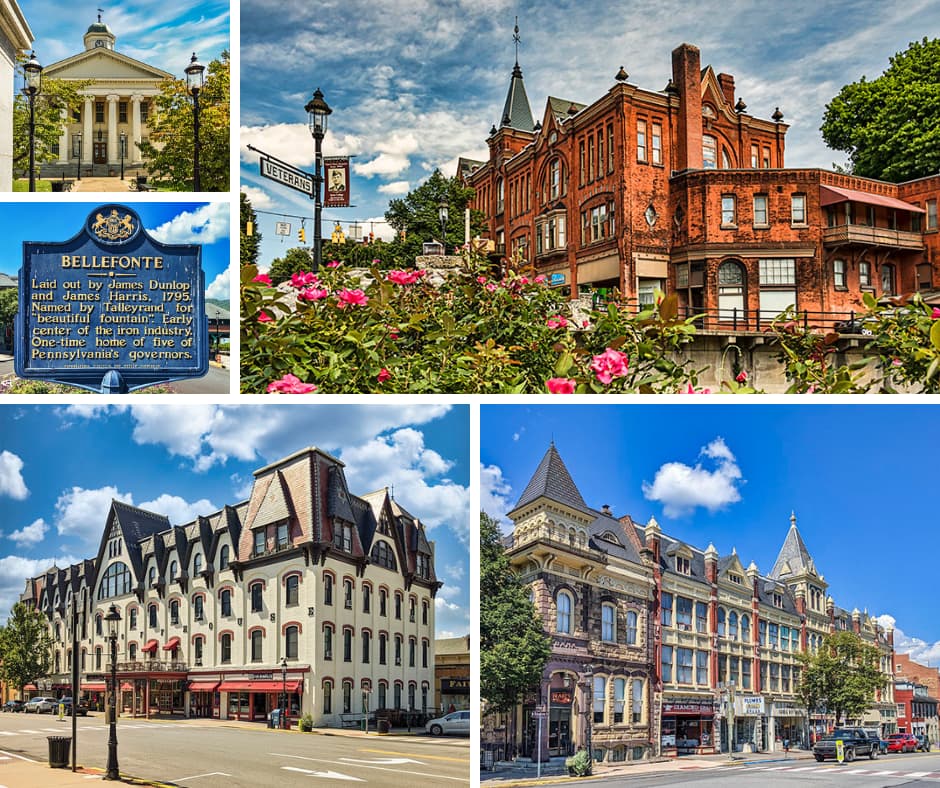
28 Must-See Attractions in Centre County is your guide to even more great things to see and do near Curtin Village!
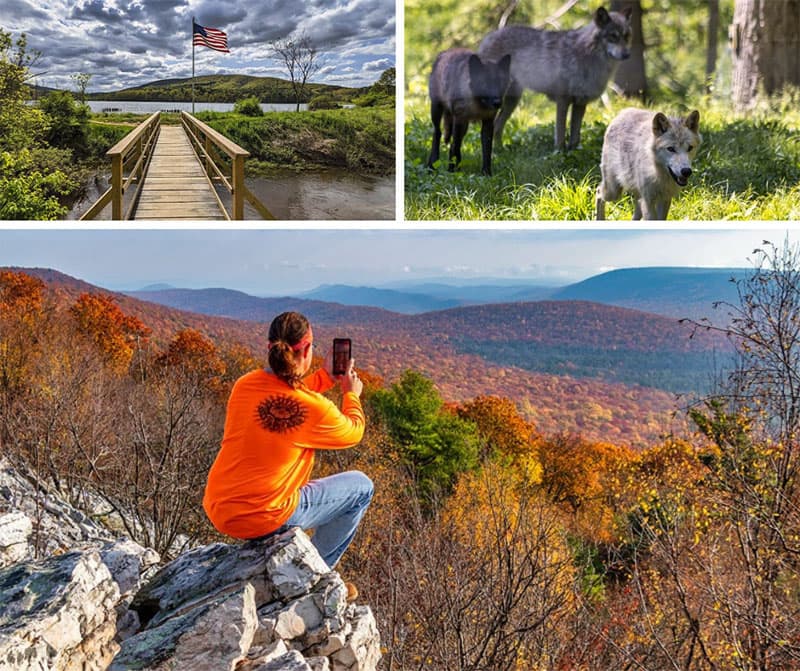
Did you enjoy this article?
If so, be sure to like and follow PA Bucket List on Facebook, Instagram, and/or Pinterest to stay up-to-date on my latest write-ups about the best things to see and do in Pennsylvania!
Click on any of the icons below to get connected to PA Bucket List on social media.
